The Merak Sakteng Trek is a unique and culturally enriching journey through the remote eastern Bhutanese districts of Merak and Sakteng. This trek offers adventurers an opportunity to immerse yourselves in the pristine landscapes and distinctive culture of the Brokpa people, who have lived in this region for centuries.
Opened in 2012, after three decades of tourism in Bhutan, the Merak and Sakteng villages, remains one of the least-visited regions in Eastern Bhutan. This trek traverses the twin villages of Merak and Sakteng, situated over 3,000 meters above sea level. Passing through the Sakteng Wildlife Sanctuary, the trek offers a chance to encounter endangered species such as the snow leopard, red panda, Himalayan bear and Himalayan red fox. There are stories that the legendary yeti also inhabits these areas. The inhabitants of the Merak Sakteng area are semi-nomadic yak herders with a unique and fascinating culture. They speak a distinct dialect, worship their own deities, and wear a unique style of dress, including yak-hair headgear with five tentacles designed to divert rain.
Details about the package
What's included
- All meals (Breakfast, lunch and dinner)
Lunches may be provided in other tourist Restaurants or picnic lunches in certain cases (While on tour). During Trek, all lunches shall be packed lunch. - Accommodations;
While on Tour accommodation shall be provided in a minimum 3 star hotel. Tented accommodation shall be provided during trek.
- Certified, English speaking guide throughout the tour and trek
Language Guides may be available at an additional cost, however this shall entirely depend upon the requirements confirmed at the time of booking - Exclusive vehicle for all transfers as per the group size
- Entrance fees for museums and monuments
- Sustainable development fund
Indian Nationals – INR 1200 per person per night
Others – USD 100 per person per night - USD 40 Visa Fee (for travelers other than Indian Nationals)
- Other govt taxes applicable
- Sleeping tents, sleeping mats & pillows.
- Dinning tents, kitchen tent & toilet tent.
- Tables, chairs, utensils, hot water bags.
- Trekking Chef and Assistants.
- Horses/ yaks to carry trekking equipments and food supplies.
- Cost related to planning and confirming your trip to Bhutan excluding the cost not within our premises. Additional Cost may be applicable in certain cases.
Complimentary
- Assistance with Bhutan Travel Info
- Guidance in planning your Bhutan tour
- Drinking water during the tour
- A traditional cultural show
- Hot stone bath in a village house
- National dress and Archery experience
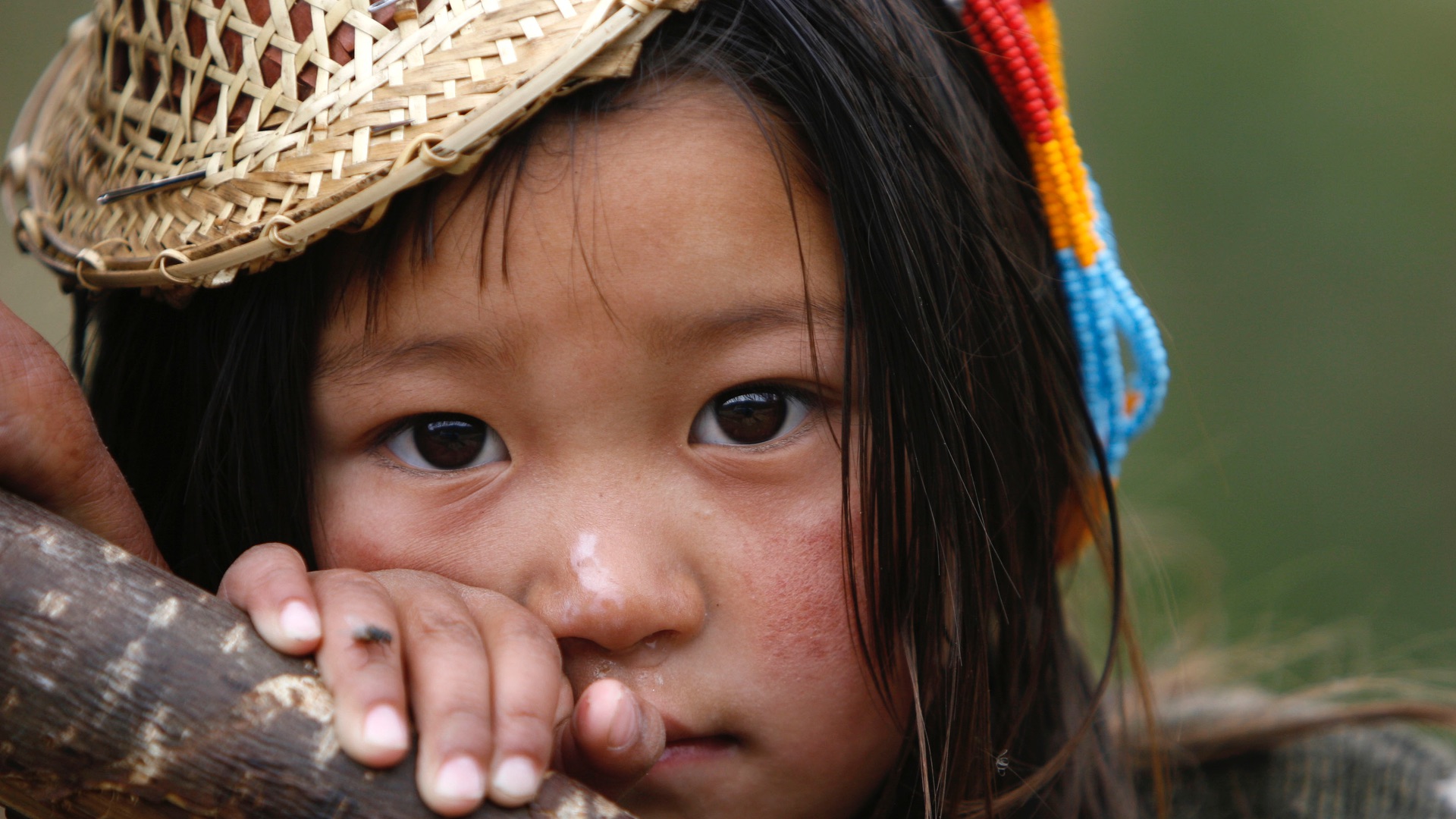
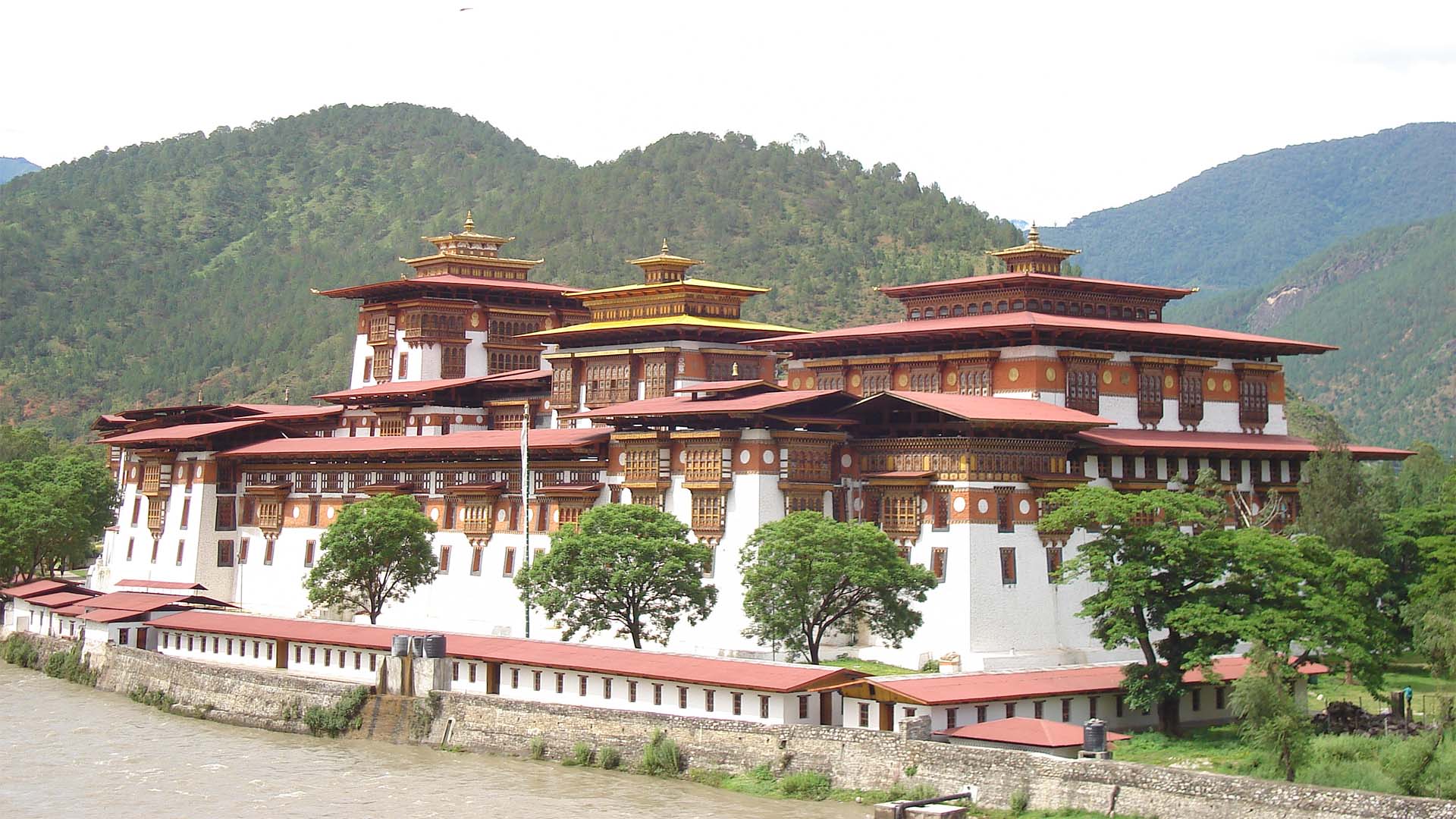
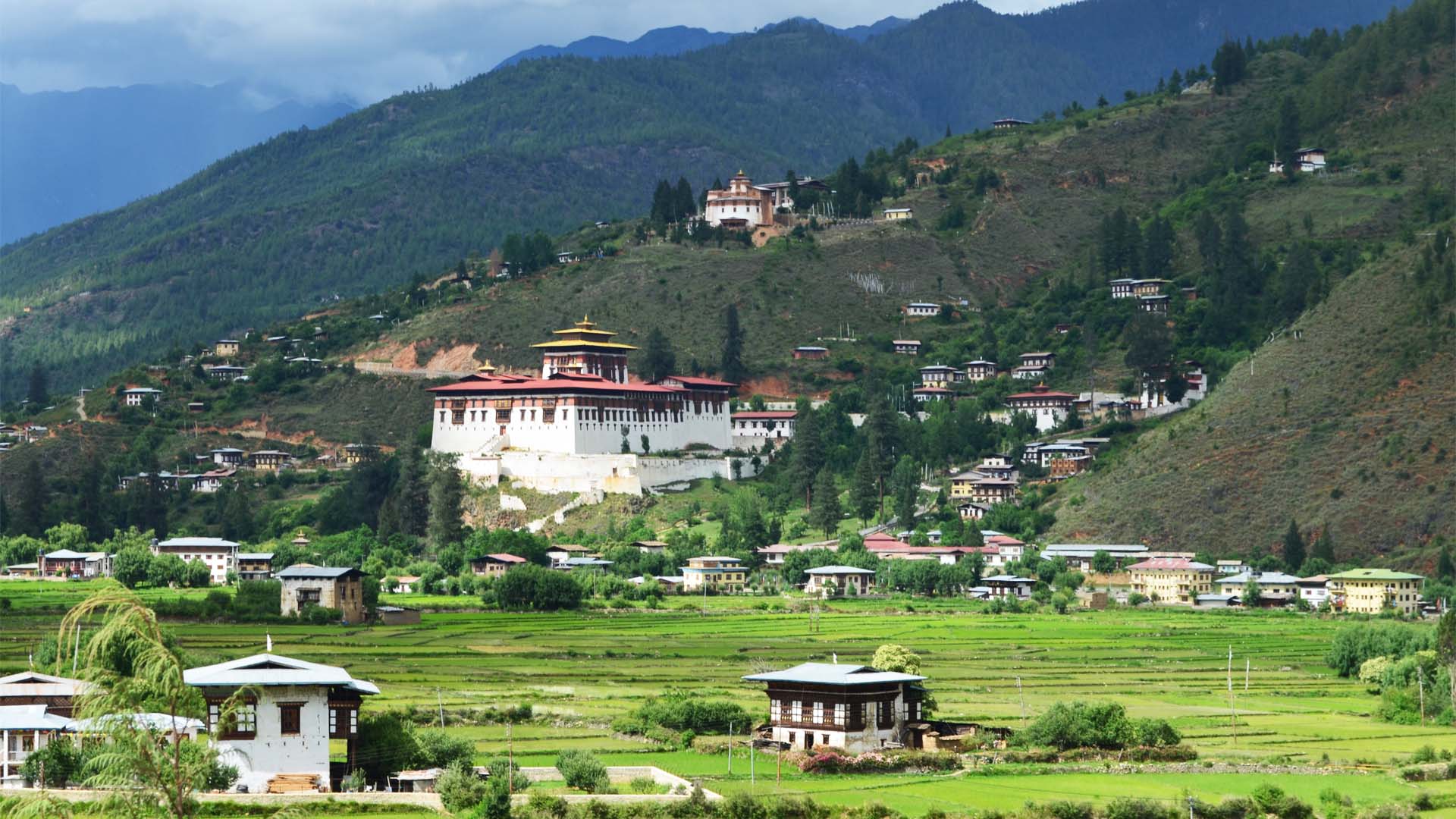
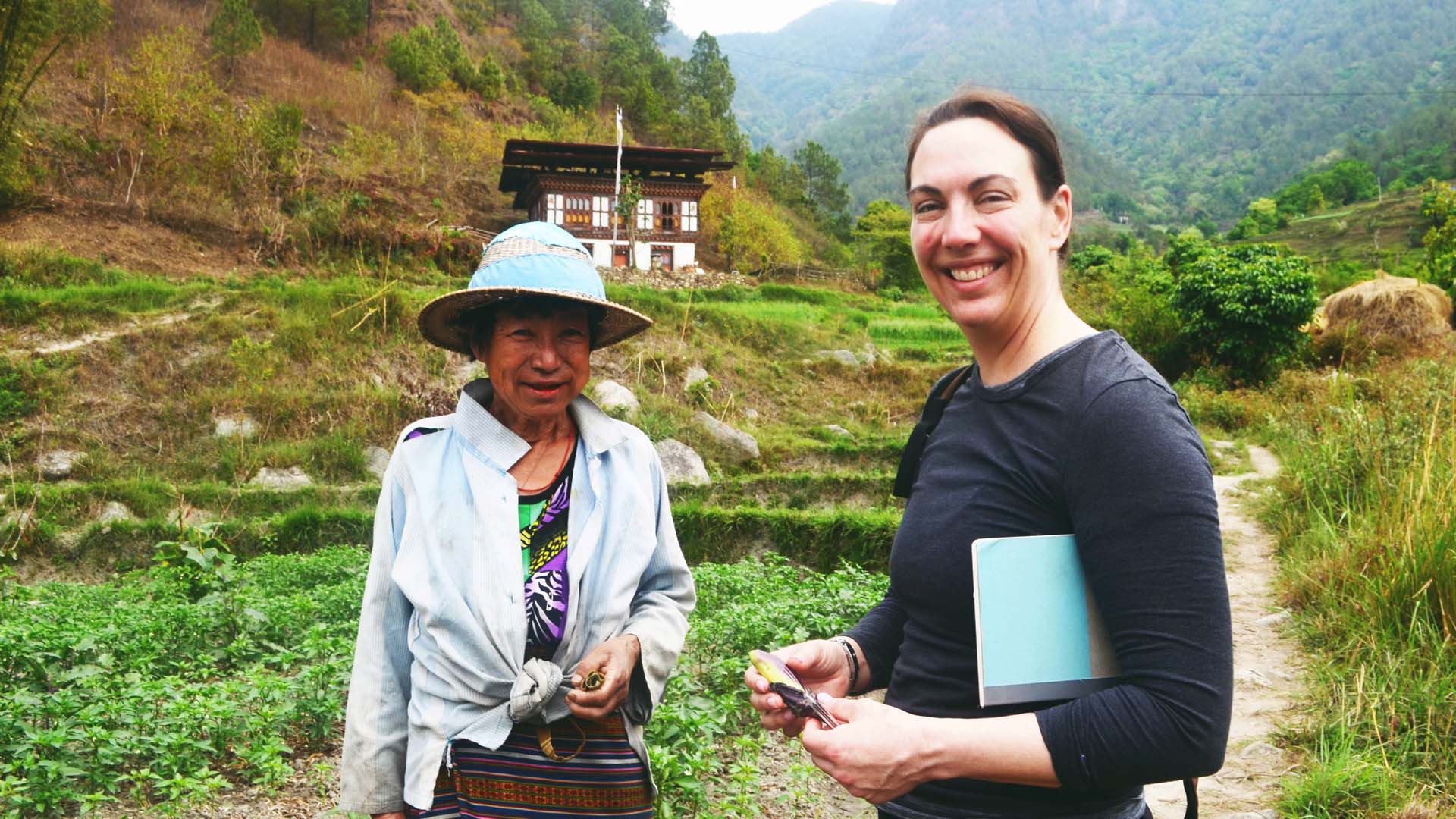
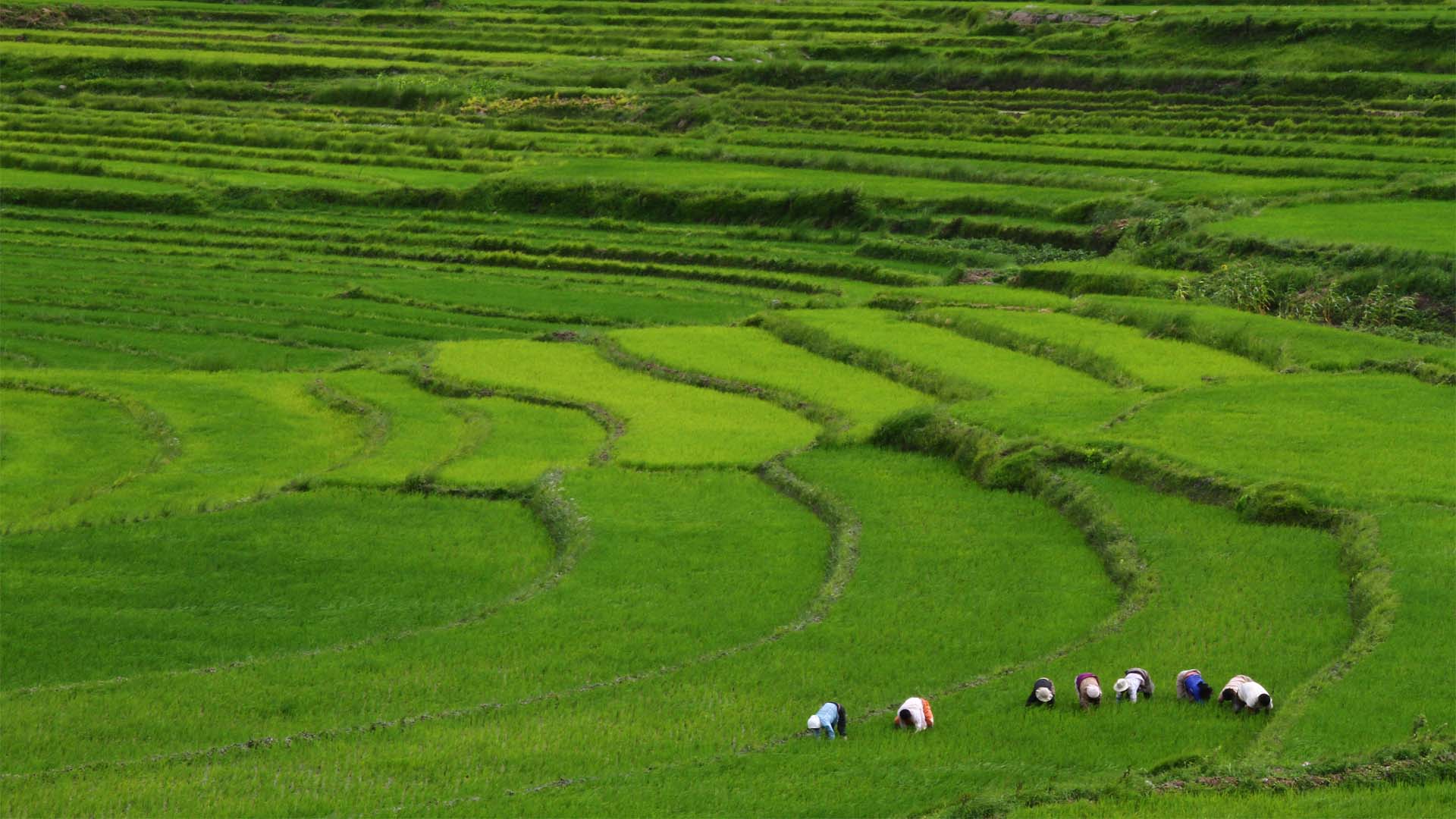
- A hassle free private and guided trip.
- Personalized attention to detail by the Tour Operators.
- Experience of most of the beautiful aspect of Western, Central Bhutan and Eastern
- Experience traditional Bhutanese life by passing through several villages where locals live as their ancestors did.
- Bhutan’s diverse landscapes, rich cultural heritage,
- Lesser-known treasures across Bhutan.
- Eastern Bhutan’s Untouched Wilderness
- Engage with the warm-hearted locals in remote villages,
- Enjoy scenic drives through Bhutan’s diverse landscapes.
- Experience the rugged and pristine beauty of the Eastern Himalayas, where few travelers venture, and uncover the hidden treasures of this remote region.
- Experience a breathtaking bird’s-eye view of the Himalayas as you fly into Paro.
- Venture into the Sakteng Wildlife Sanctuary.
- Experience the unique lifestyle and traditions of the Brokpa people, known for their yak-herding culture and distinctive attire.
- Traverse through diverse and breathtaking landscapes, including lush forests, alpine meadows, and high-altitude passes.
- Visit remote villages like Merak and Sakteng, where you can interact with locals and learn about their unique customs and traditions.
- Witness traditional festivals, featuring colorful dances and rituals that celebrate the Brokpa culture.
- Observe the Brokpa’s traditional dress, including their distinctive yak-hair headgear with tentacles designed to divert rain.
- Encounter rare and endangered species such as the snow leopard and Himalayan red fox, adding an element of wildlife adventure to the trek.
- Trip Type: Private and Guided Trip
- Itinerary Duration: 19 Days
- Trek Duration: 7 Days
- Trip Rating: Easy – Moderate – Strenuous
- Travel Type: Nature, Culture, Walks, Hikes,Trek, Local Interactions & Experiences, Sights & Monuments
- Arrival: Paro international Airport
- Departure: Paro International Airport
- Destinations: Western, Central and Eastern Bhutan
- Best Time: Mar – Jun & Sep to Nov
- Trek Start Point: Chaling, Trashigang
- Trek End Point: Phongmay, Trashigang
- Trek Difficulty: Strenuous
- Highest Altitude: 4153 m
- Daily Avg. Walking Distance: 15 km
- Daily Avg. Walking Time: 6 Hr
Travel Cost
Kindly write to us at idealtravelcreations@gmail.com for the travel cost as the cost varies for different months.
The cost does not include the following:
- All kinds of bank charges
- Single room supplement
- Personal expenses, such as phone, laundry, etc.
- Any form of insurance
- Any kinds of bottled drinks
- Flights fares – both domestic and international
- Gratitude and Tipping
- Extra activities such as rafting, cycling, horse ride
(if not included in the inclusion or complimentary) - All kinds of additional expenses due to unforeseen contingencies whether man-made of natural
- Anything not mentioned in the cost inclusion during the confirmation of the trip
Notes
- We reserve the right to change the itinerary or hotels anytime as may be required to, in case of unforeseen contingencies (natural/man made) or unavailability of hotels or any other services such as flights and transport.
- Some of the sites to be visited may be closed on government holidays or during breaks. In such cases we shall do other sightseeing in its place.
- This itinerary can be tailor made for any duration or within any destination and can be combined with any kind of activities such as trekking, rafting, walking tour, cycling , etc
- It is advisable to book tours in Bhutan at least 6 months prior to the travel date because of limited Bhutan tourism infrastructures and inventories.
- Except for the planning, guidance and information phase, all bookings are confirmed only after the receipt of the tour payment.
Cancellation Policies
- We shall charge a minimal amount of USD 30 as administrative charges for any bookings cancelled more than a month before the date of travel.
- 25% of the payment shall be charged as cancellation charges for any bookings cancelled within one month to 16 days from date of travel.
- 50% of the payment shall be charged as cancellation charges for any bookings cancelled within 15 days to 7 days from date of travel.
- 100% cancellation charges shall be applicable for any any bookings cancelled within 6 days from date of travel or no show
- Cancellation charges shall also depend upon the policies of the parties from whom we have taken the services such as hotels and airlines. The cancellation charges levied by the external parties shall be applicable incase it exceeds the amount as mentioned above in points 1 – 4.
Itinerary
DRIVING DISTANCE: 55 KM | DRIVING TIME: 1.5 HR.
The panoramic Himalayan views shall be mesmerizing as you fly to Bhutan. The Landing is another experience.
On completion of immigration formalities, your guide from Ideal Travel Creations shall welcome you with a “Tashi Khadar” on your exit from the Airport gate. Drive to Thimphu. Discover the barren mountains, Tamchog Lhakhang, the Paro River (Pa Chhu) joining the Thimphu River (Wang Chhu) at Chhuzomsa and the three stupas as you drive the well-maintained road between Paro and Thimphu.
Lunch at Thimphu. You may choose to relax at hotel or walk around the Thimphu town. In the evening, explore the craft bazar and the Kaja Throm, Thimphu (Formerly Centenary farmers market). A private traditional cultural show before dinner. Overnight in Hotel in Thimphu.
ALTITUDE OF THIMPHU: 2300 M
In the morning, visit the National Memorial Chhorten. Located in Doeboom Lam, it was built in 1974 in honor of the Third King of Bhutan. Drive to Kuenselphodrang, where used to be the palace of the Sherab Wangchuk the thirteenth Druk Desi. The construction of A Gigantic Statue of The Great Buddha Dordenmawas started in the year 2006 to celebrate the 60th anniversary of the Fourth King of Bhutan. The construction completed in 2015. The Kuenselphodrang Nature park opened in 2011 adds to natural value and beauty of this place. On the way back visit the Hindu Temple formally known as Devi Panchayan Mandir which was consecrated on 1st October 2019. His Majesty, The King Jigme Khesar Namgyel Wangchuck offered worship and granted “Tika” to the Hindu Communities on the Dussehra of 2019 in this temple. Visit the Changangkha Lhakhang, a temple complex on a ridge overlooking Thimphu valley. The temple was founded in the 13th century by one of the sons of Phajo Drugom Zhipo. It is customary that all the children born in Thimphu is taken to the temple for blessing. Finally visit Simply Bhutan. This is the first living museum in the country. It depicts ancient Bhutan and the Bhutanese ways of life in the ancient times. It has an altar, a photo studio, a Zhabdrung museum, a traditional Bhutanese kitchen, demonstration stalls of textiles and handmade products and cafe offering butter tea Suja, snacks and a souvenir shop.
Afterlunch, visit the Takin Preserve Centre. Takin is the National animal of Bhutan. Then visit the Institute of Traditional Medical Services which was first established as an “Indigenous Dispensary” in 1968 at Dechencholing, Thimphu as directed by the Third King of Bhutan. Visit the National Institute of Zorig Chusum. Students are taught the 13 traditional arts and crafts of Bhutan in the institute.
In the evening visit the Tashichhodzong, which has been the seat of the Government since 1952. It houses the Office of the King of Bhutan, the throne room and the offices of certain secretariat and Ministries. The dzong also constitutes a monastic body.
An interactive session with your Bhutanese hosts in the evening. Dinner with your Bhutanese Host. Overnight in hotel in Thimphu.
ALTITUDE OF THIMPHU: 2300 M
DRIVING DISTANCE: 76 KM | DRIVING TIME: 2 HR
Start your day with a drive to Dochula Pass. You shall first see the Simtokha Dzong and then the winding roads leads you through blue pine forests and the villages of Hongtsho (2890m) and Yusipang. The local villagers sell apples, walnuts, dried cheese in this area. The road climbs through the forest till you reach the Dochula Pass (3150 m), the highest point between Thimphu and Punakha valleys. Enjoy the breathtaking views of the higher Himalayas, explore the 108 Druk Wangyel Chhortens and then visit the Druk Wangyel Lhakhang.
Descend to the subtropical lush and beautiful valley of Punakha. The terraced rice fields, the meandering river and the beautiful villages shall welcome you as you reach Punakha.
Visit Chimi Lhakhang. Also known as the temple of fertility, the temple was built by Lam Drukpa Kuenley. the revered ‘Divine Madman’ and Buddhist ‘crazy wisdom.’ A lot of graphic phallus paintings and crafts might surprise you in the nearby areas. Visit the Punakha dzong at the junction of Pho Chhu and Mo Chhu River. Addition to its appealing looks this Majestic Dzong stands six stories high. Walk over the one of the country’s longest suspension bridges and enjoy the breathing views, soothing breeze and a beautiful experience.
Dinner and overnight in hotel.
ALTITUDE OF PUNAKHA: 1250 M
After breakfast, drive along the slopes of bare hills following the river (Drang Chhu) until you reach Chuzomsa, (the confluence of the Dang Chhu and the Pe Chhu). After crossing the bridge, the road goes uphill through pine forests often encountering small villages, where women spinning yarns on their porches, older men idling their time and children frolicking around could be the most common sights. Explore the Lawala Pass. A few Photographs are must here.
Drive down along the pine forest till you reach Gangtey. Visit the Gangtey Goemba overlooking the large green expanse of the Phobjikha Valley. Gyaltse Pema Thinley, the grandson and mind reincarnation of Pema Lingpa founded the Temple in 1613, and Tenzin Legpai Dhendup, the second re-incarnation, built the temple.
Hike the Gangtey Nature Trail. The trail starts at the 17th century Gangtey Monastery. The two-hour gentle trek lets you get immersed in the beautiful Phobjikha valley. Visit the Khewang Lhakhang and interact with the young monks. Explore the nearby villages for a while.
On the way back to hotel, visit the Black Necked Crane Information Centre, a place for recreation with crane watching equipment (binoculars, spotting scopes) and reference books.
Dinner and overnight in hotel.
ALTITUDE OF PHOBJIKHA/ GANGTEY: 3000 M
DRIVING DISTANCE: 160 KM | DRIVING TIME: 4 – 5 HR
Today your journey goes deeper into the Kingdom of Bhutan amidst breathtaking views, beautiful landscapes and interesting experiences. Visit the Chendebji Chorten, built in the style of the great Boudhanath Chorten of Nepal. Further near Trongsa, stop at a place across on the other side of the Trongsa Dzong, where you get a perfect view of the Dzong. Photograph the Dzong.
Continue your journey with a stoppage at Yotongla, the highest peak between Bumthang and Trongsa and then the Chhumey village, known for Yathra Textile. It is the most famous textile product of Bumthang. The Chhumey Valley is known for the beautiful Yathra woven by the locals. Yathra is a hand-woven fabric made from the wool of sheep or Yak. The wool is first spun into threads and then dyed before they are woven into Yathra with beautiful flower patterns and colors. The Yathra cloth is made into scarves, jackets, tablecloths, bags, etc. Most of the women in this valley, especially in Zungye village earn their lively hood by weaving Yathra which is supplied to various towns in Bhutan.
Your today’s journey ends on arrival at hotel in Bumthang.
ALTITUDE OF BUMTHANG: 2800 M
Your day starts with a visit to the Jakar Dzong, literally meaning the Castle of White Bird. The current structure was built in 1667. Visit the Wangdichholing Palace which was the home to the First and Second Kings of Bhutan. Continue your day’s sightseeing with visits to Jambay Lhakhang and Kurjey Lhakhang.
Picnic Lunch in a quaint setting in the Chhoekhor valley.
After lunch, visit the Tamshing Lhakhang and the Könchogsum Lhakhang. As you reach Bathpalathang, visit the cheese and apple juice/wine making factory. Taste the Locally made red panda beer here.
Before going back to the hotel, explore the Chamkhar Town.
ALTITUDE OF BUMTHANG: 2800 M
BUMTHANG – URA
DRIVING DISTANCE: 50 KM | DRIVING TIME: 2 HRS
URA – MONGAR
DRIVING DISTANCE: 140 KM | DRIVING TIME: 4 HR
After breakfast drive to Ura via Old Bumthang – Mongar Highway. Explore Ura Valley for a while.
At 3,100 meters, Ura village consists of about 50 traditional houses, surrounded by lush forests, creating a serene atmosphere. Approximately 90 minutes from Bumthang Town, Ura was named after Padmasambhava, the 8th-century Guru who introduced Buddhism to Bhutan, and is celebrated through the annual Yakchoe festival. Local legends recount Padmasambhava’s miraculous visit to cure a leprosy outbreak, during which he left behind a statue of Vajrapani. This story is central to the Yakchoe celebrations, reflecting the valley’s rich cultural heritage. Ura Valley captures the essence of ancient beliefs and traditions, offering visitors a glimpse into Bhutanese village life. It’s a must-visit for anyone exploring Bumthang, thanks to its stunning scenery and deep-rooted history.
Continue the incredible journey through luscious rhododendron forests and pine forest. This drive through the Thrumsingla National Park gives you a frequent sight of blood pheasant and if lucky Snow leopards and red pandas may be seen. On reaching Thrumsingla at 3800 m, the highest point between Bumthang and Mongar, the road then descends to 650 m altitude in mere few hours. On the way stop at Sengor village.
Dinner and overnight in Mongar.
ALTITUDE OF MONGAR: 1600 M
DRIVING DISTANCE: 115 KM | DRIVING TIME: 3.25 HRS
The drive from Mongar to Trashiyangtse is a journey through some of Bhutan’s most scenic and untouched landscapes. As you wind your way through the rugged terrain, you’ll pass through dense forests, cross high mountain passes, and glimpse traditional villages nestled in the hillsides. The route offers breathtaking views of the eastern Himalayas, with every turn revealing new vistas of lush valleys and distant peaks. Along the way, you may encounter local farmers tending to their terraced fields and experience the serene beauty of Bhutan’s remote countryside. This drive is not just a means of travel, but a scenic adventure into the heart of Bhutan’s eastern wilderness.
On the way visit the Drametse Monastery, one of the most notable religious sites built in the 16th century by Ani Cheten Zangmo, the grand-daughter of the renowned Terton Pema Lingpa. The Drametse Ngacham or the “Dance of the Drums of Drametse,” was born in this lhakhang in the 16th century. Today, it is a popular dance performed at all major festivals. This dance was proclaimed as a ‘Masterpiece of the World Intangible Heritage’ by UNESCO in 2005.
Further on the way visit the Gom Kora Lhakhang. Gomphu means “Meditation Cave” and Kora means “Circumambulation”. The name is derived from a cave formed out of a rock-face next to a temple that has been built as a tribute to this sacred site.
Located in the eastern Bhutan at an altitude of 1700 m, Trashiyangtse is a rapidly growing town and administrative center of the district. The main town is situated in a small river valley and is a lovely spot to take walks in the countryside. This area is famous for wooden containers and bowls.
Dinner and overnight in hotel or village homestay.
ALTITUDE OF TRASHIYANGTSE: 1800 M
DRIVING DISTANCE: 50 KM | DRIVING TIME: 2 HRS
After breakfast, visit Chorten Kora. One of the most important stupa in Trashiyangtse built in the year 1740, and then explore the villages, learn about wooden containers and bowls and making it.
Then drive to Bomdeling and explore the valley. Bomdeling is a picturesque valley renowned for its natural beauty and ecological significance. This serene area is a vital wintering ground for the endangered black-necked cranes, making it a haven for birdwatchers and nature enthusiasts. Surrounded by lush forests and traditional villages, Bomdeling offers a peaceful retreat into nature, where visitors can experience Bhutan’s rich biodiversity and the harmonious coexistence of people and wildlife. The valley is also a part of the Bomdeling Wildlife Sanctuary, which protects the region’s diverse flora and fauna.
Drive to Trashigang. In the evening, While in Trashigang, visit the Trashigang Dzong, which lies on the headland of the dzongkhag that gives us the confluence of the Drangme Chhu and the Gamri Chhu. It was built by Minjur Tempa, Bhutan’s third Desi in the year 1667. It was once destroyed by fire and was rebuilt in only three years. In the Gorikha (Veranda) are the paintings of the kings and guardians of the four directions.
Dinner and overnight in hotel.
ALTITUDE OF TRASHIGANG: 1070 M
TRASHIGANG – CHALING
DRIVING DISTANCE: 35 KM | DRIVING TIME: 1.5 HRS
CHALING – DONMANG CHHU
19 KM | 7-8 HRS | 2217 M ASCENT | 230 M DESCENT
After breakfast, drive to Chaling, passing through Radhi village. Your trekking crew and pack animals will be waiting for you at Chaling. With a nice introduction with your trekking crew, the trek begins with a gradual climb towards Shaktimi Meadow, where you will see yaks and sheep grazing, and yak herder’s huts dotting the hillsides. Continue climbing to reach Mendula Pass at 3,354 meters. From the pass, descend through rhododendron forests until you reach Donmang Chu at 3,124 meters.
Dinner and overnight in camp.
ALTITUDE OF CAMPSITE: 3124 M
14 KM | 5 HRS | 396 M ASCENT
After breakfast, walk along a paved road from Domang Chu to Merak. The final stretch involves a gentle ascent before reaching Gangu village. After a further 45-minute walk from this village, you will arrive in Merak, situated at an altitude of 3,520 meters. The campsite before the village offers spectacular views of the nearby mountains and the village itself. Take some time to visit the local village and meet the people. Alternatively, you can drive to Merak, which takes about 2 hours.
Dinner and overnight in camp.
ALTITUDE OF CAMPSITE: 3520 M
16 KM | 5 HRS | 633 M ASCENT | 1074 M DESCENT
After breakfast, set out for the most challenging journey on this trek as you climb the highest point at Nachungla Pass (4153 M).
After breakfast, head east with a gradual climb to the first pass at 3,900 meters. Today’s journey involves crossing the highest pass along with several smaller passes and ridges, making it potentially the toughest day of the trek. We continue along the tree line until we reach Nachungla Pass at 4,150 meters. Here, you can enjoy 360-degree views of Bhutan’s peaks, Arunachal Pradesh, and Tibet. From the pass, we descend to the Miksateng village campsite at 3,080 meters.
Dinner and overnight in camp.
ALTITUDE OF CAMPSITE: 3080 M
14 KM | 5 HRS | 81 M ASCENT | 310 M DESCENT
After breakfast we will follow the trail descending to the river, cross it, and follow the riverbank for a few hours. Then, gradually climb to a hill adorned with small Chortens (Stupas) overlooking the Sakteng valley. If you’re lucky, you might spot a red panda among the trees. Finally, descend from the ridge and camp on the outskirts of Sakteng village at 2,950 meters.
Dinner and overnight in camp.
ALTITUDE OF CAMPSITE: 2950 M
21 KM | 7-8 HRS | 1450 M ASCENT | 1450 M DESCENT
A full day to explore the Sakteng Village.
Sakteng Village offers a unique and culturally immersive experience for travelers seeking to explore the unspoiled beauty of Bhutan. This picturesque village, located at an altitude of around 2,950 meters is renowned for its rich cultural heritage and stunning natural landscapes.
Sakteng is home to the Brokpa people, a semi-nomadic community known for their distinct culture, language, and traditional attire. Visitors can witness the Brokpa way of life, which revolves around yak herding and farming. The locals wear unique yak-hair headgear with tentacles designed to ward off rain.
The village is characterized by traditional Bhutanese houses, built with stone and wood, reflecting the architectural style of the region. The houses are often adorned with intricate woodwork and colorful paintings.
Sakteng is surrounded by lush forests, alpine meadows, and panoramic views of the Eastern Himalayas. The region is known for its biodiversity, with a variety of flora and fauna, including the elusive red panda and Himalayan black bear.
If timed right, visitors can experience local festivals that celebrate the Brokpa culture with traditional dances, music, and rituals. These festivals provide a glimpse into the vibrant cultural heritage of the community.
ALTITUDE OF CAMPSITE: 2950
17 KM | 7 HRS | 74 M ASCENT | 1291 M DESCENT
After an early breakfast, we shall begin with a short climb to the small hill at the west end of the village. Then, descend to the river and walk alongside it through broadleaf forests. We will camp in a beautiful meadow near the river by Joenkhar Teng village, situated at 1,733 meters. Joenkhar Teng is located on the hillside and is home to both Brokpa and Sharchopa communities, with a community school and an outreach clinic.
Dinner and overnight in camp.
ALTITUDE OF CAMPSITE: 1733 M
12 KM | 5-6 HRS | 346 M ASCENT | 942 M DESCENT
Today is the last day of the trek and it begins with short climb. Crossing the suspension bridges, you will climb shortly to Phongmay village.
Your vehicle will be waiting for you at Phongmay village. Bid farewell to your trekking crew and then drive to Trashigang. On the way, stop at Rangjung and visit Rangjung monastery, which is founded by His Eminence Garab Rinpoche.
Dinner and overnight in hotel in Trashigang.
ALTITUDE OF TRASHIGANG: 1070 M
After breakfast, drive to Yonphula Airport and then fly to Paro Airport.
Your car will be waiting for you at the Paro Airport. Drive to hotel and check in hotel.
In the afternoon, visit the Namgay Artisanal Brewery and taste different flavors of Bhutanese beer brewed here. Then spend some time in the Paro Airport View Point. Finally Explore the Paro Town. Visit Coffee shops, handicraft shops and interact with the locals.
Dinner and overnight in hotel.
Your day starts with an early morning hike to Taktshang Monastery, one of the most wonderful and significant monasteries in Bhutan. Also known as the Tiger’s Nest, the hike shall be accompanied with stories of Guru Rinpoche, who arrived on the spot where the monastery is located on the back of a flying tigress somewhere in 8th century. Reaching the top shall enlighten you on why the Monastery is an iconic pilgrimage for visitors to the Kingdom of Bhutan.
Visit Kyichhu Lhakhang, a 7th-century temple nearby with two magical orange trees that bear fruit throughout the year. Drive to a local farmhouse for lunch with a Bhutanese family. Try the traditional Bhutanese hot stone bath, National Dress and Archery here. You shall also have an opportunity to witness the daily life in a village in Bhutan.
Farewell dinner at the hotel.
ALTITUDE OF PARO: 2280 M
Your 19 days of Bhutan travel with The Merak Sakteng Trek comes to an end with a drive to Paro Airport and farewell.
Book this tour
Worth a Look
Similar Packages
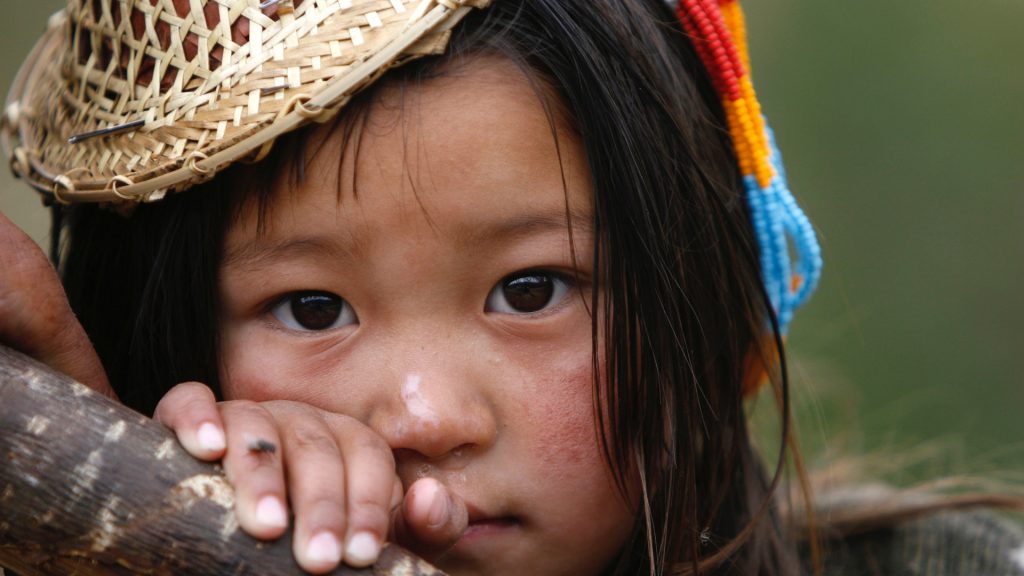
Nature & Cultural delight
- 13 Nights Cultural Tour in Bhutan
- Special Discounts available
- USD 4395 onwards
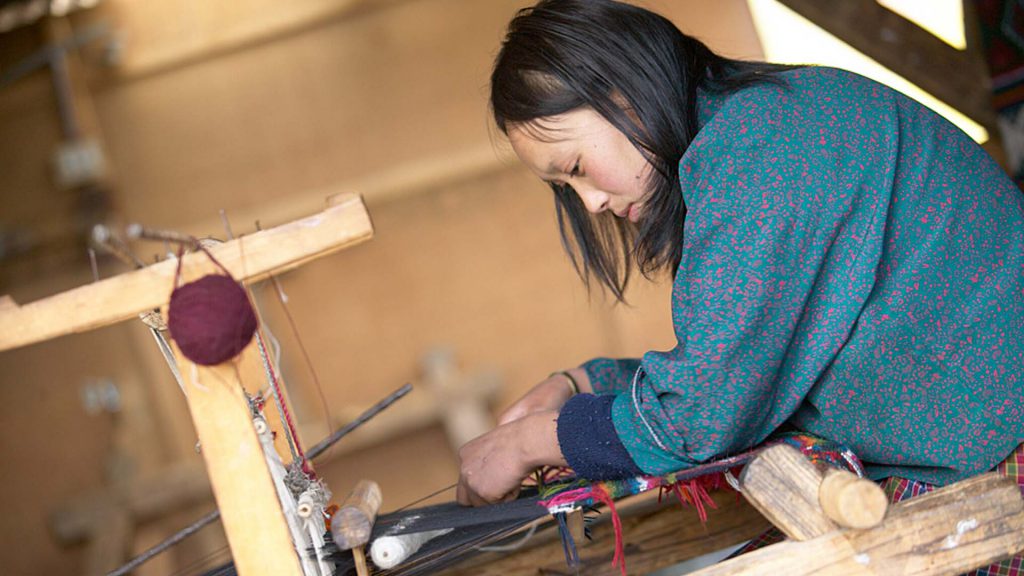
Unveiling Bhutanese Textile
- 15 Nights Bhutanese Textile Tour
- Special Discounts available
- USD 5065 onwards
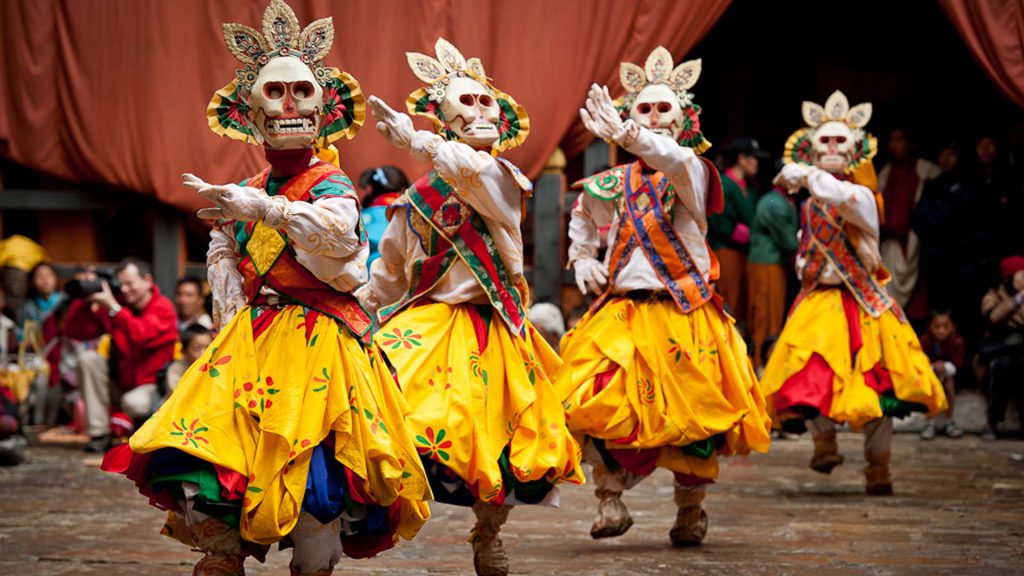
Thangbi Mani Festival Tour
- 10 Nights Bhutan Festival Tour
- Special Discounts available
- USD 3390 onwards
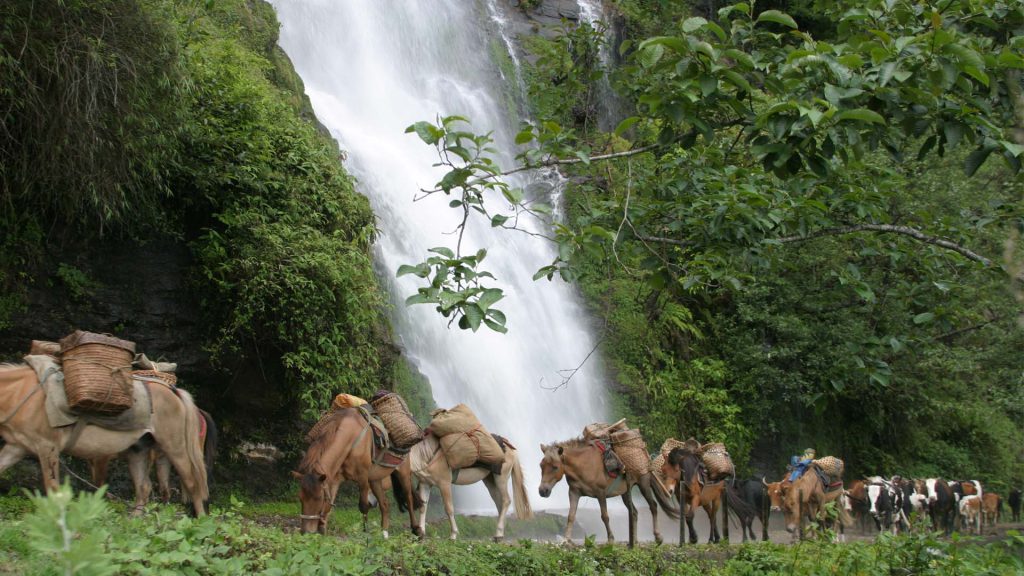
The Dagagla Ancient Trail
- 14 Nights Thimphu to Dagana Trek
- Special Discounts available
- USD 4730 onwards
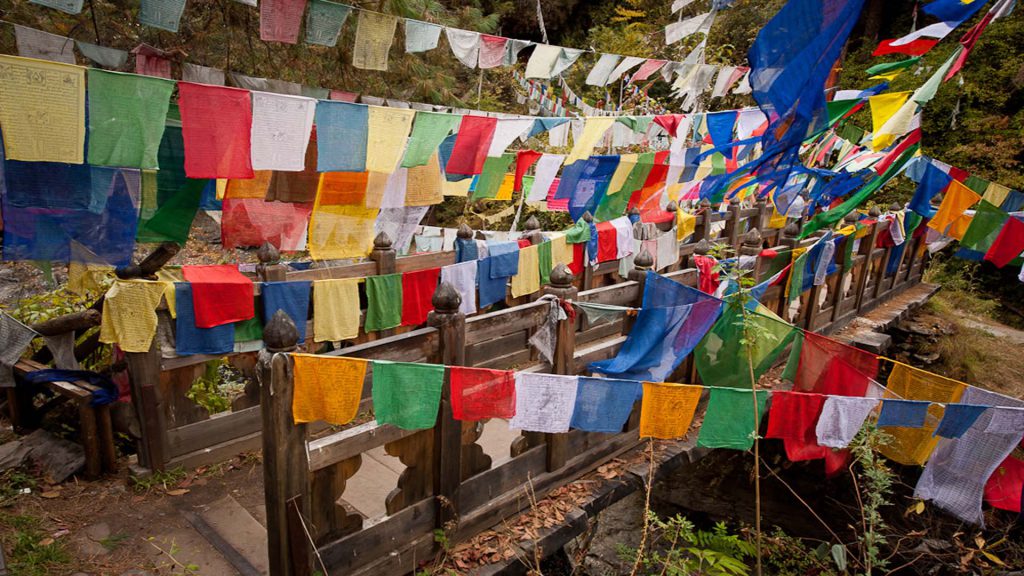
A Photo Journey in Bhutan
- 8 Nights Bhutan Photography Tour
- Special Discounts available
- USD 4070 onwards
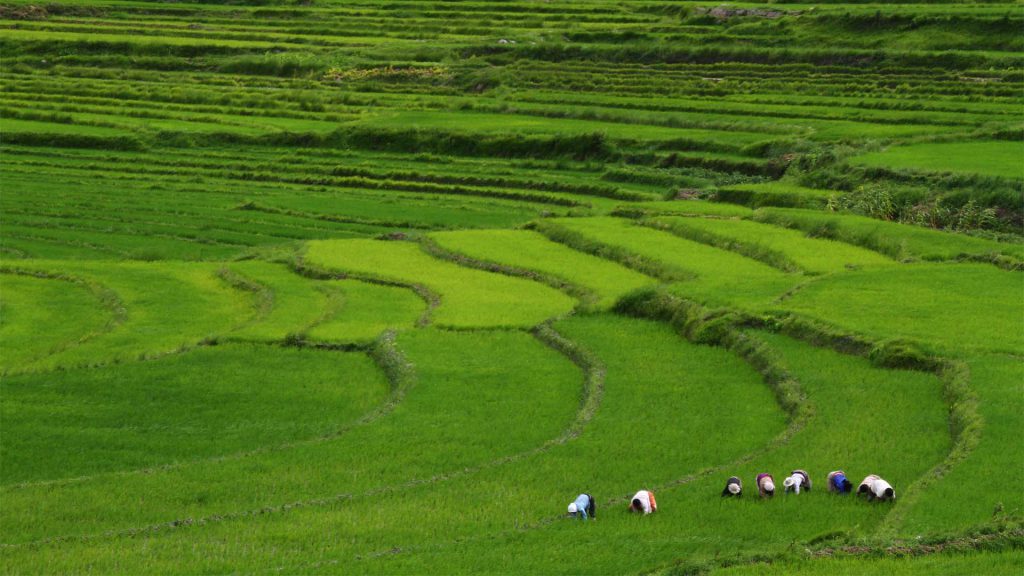
Happiness and Hikes
- 6 Nights Rejuvenating Bhutan Travel
- Special Discounts available
- USD 2050 onwards
